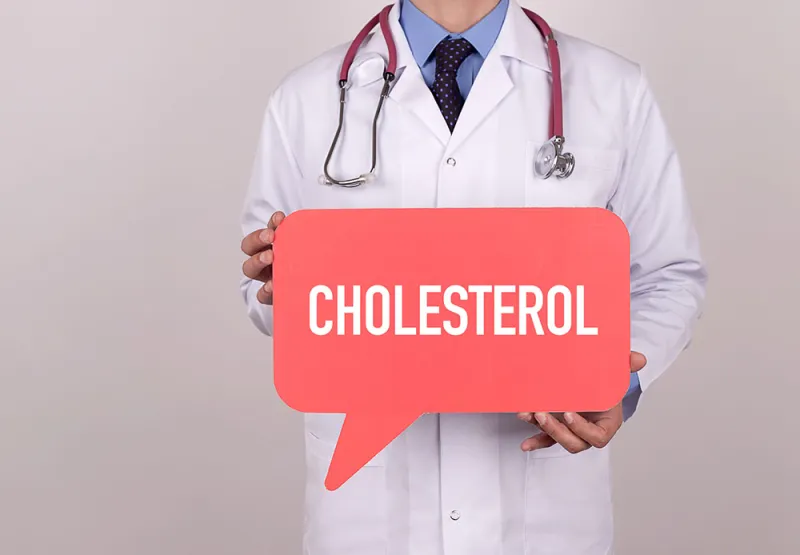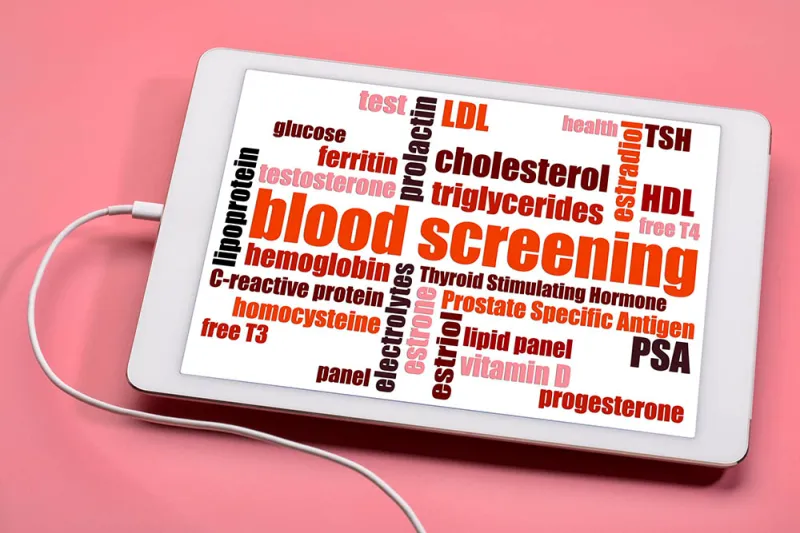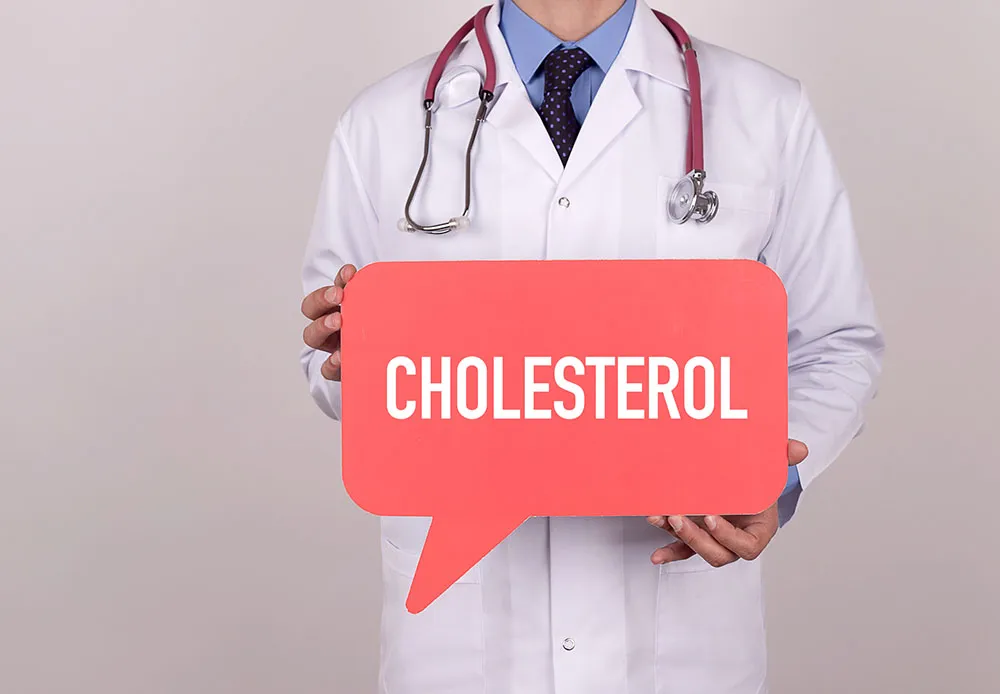A while ago I realized that so-called bad cholesterol, LDL, is neither cholesterol nor bad for you.
I can almost hear you thinking:
“Dr. Berg, are you nuts? Everyone says LDL cholesterol is bad!”
Allow me to explain.
LDL (low density lipoprotein) isn’t actually cholesterol. Rather, it’s a transport mechanism for shuttling cholesterol to the places in your body that need sufficient cholesterol levels to be healthy.
The reason cholesterol needs to be transported is because it’s what’s called hydrophobic – on its own it doesn’t mix well with the watery environment in your body. But it’s got to get to your cells intact somehow, right? That’s where lipoprotein comes in.
Though LDL is characterized as “bad”, in truth it’s an essential carrier of cholesterol from the liver through your vascular system to your cells.
Besides LDL, you also have the so-called good cholesterol HDL (high density lipoprotein). HDL cholesterol, too, is a carrier of cholesterol. It’s journey is the reverse of LDL; that is, it carries cholesterol from your vascular system to your liver.
In addition to cholesterol, lipoproteins also carry triglycerides, which are blood fats.
Understanding your body is important. You can see how LDL and HDL are simply exchangers: they shuttle fats, including cholesterol, back and forth in your body. Nothing inherently good or bad about them.
In this article:
Your Body Needs A Lot Of Cholesterol

Your body makes its own cholesterol; about 3,000 mg per day. That’s the equivalent each day of eating about 14 eggs, 300 strips of bacon, or roughly a pound of butter.
Why so much? Because your body needs sufficient cholesterol levels for these everyday functions:
-
As the raw material for cell membranes. All of the 100 trillion cells in your body have a membrane that contains cholesterol. A healthy cell membrane allows exchange of nutrients, vitamins, and minerals from outside to inside the cell and vice versa.
-
For its anti-oxidant properties to prevent free radical damage
-
For its anti-inflammatory properties
-
In order to make vitamin D
-
To help your body make bile, the substance that aids in breaking down fat and extracting the nutrients such as fat-soluble vitamins from it
-
To support the production of the stress hormone cortisol, which is essential for life, along with sex hormones including estrogen, testosterone, and progesterone
As well, your body needs cholesterol to respond to certain health crises such as to:
-
Bind with and inactivate bacterial toxins when you have an infection
-
Prevent damage from microbes
-
Help repair damage to cell membranes by acting as a type of bandage
I know this is a lot to take in, but stay with me for the information that’s most important for you to understand.
The Most Important Information About LDL To Know
If you remember nothing else, I want you to understand that there are two types of LDL. They’re called Type A and Type B, or alternatively Pattern A and Pattern B.
Type A is large and buoyant; it floats. It’s not involved in any plaguing or clotting and is considered the more normal LDL.
Type B is smaller and denser, so the particles can be involved in the formation of plaques or clots. When someone has a heart attack or stroke, they tend to have more of the Type B LDL.
Type A lasts about two days in your body; Type B, about five days. So not only is Type B potentially more closely associated with cardiovascular health risks, it also lingers longer in your body, giving it a higher probability of causing problems.
But one critical point to note is that Type B isn’t bad. It’s actually produced as a healing response – like a bandage – to the damage that a high carb, high sugar diet inflicts, making it simply one link in a chain of reactions to a harmful event in your body. Type B will form a plaque or clot to try to heal inflammation or a lesion in your body, in the same way, if you cut yourself you’d develop a scab as part of the healing process.
Over time, the formation of enough plaques or clots can cause a heart attack or stroke. But your body doesn’t think long term; its concern is with immediate survival, and it will respond over and over again to try to heal inflammation and lesions.
Unfortunately, routine cholesterol tests don’t differentiate between the two types. So how can you tell how much of each you have?
The Simplest Way To Gauge How Much Of Each Type Of LDL You Have
You could have a very advanced test done, but the easiest way is to look at your levels of HDL and triglycerides.
Let me explain:
If your triglycerides are high but your HDL is low, chances are you have more of the potentially problematic Type B LDL cholesterol. This is what I most often see when my patients first come to me and they’re on a diet high in carbs and sugar.
But if your triglycerides are low and your HDL is high, chances are you have more potentially healthy Type A LDL.
So far, so good.
If you’re wondering how to get more Type A and keep down Type B LDL, here’s the easiest answer:
-
Eat saturated fats, which promote higher levels of Type A LDL.
-
Eliminate refined carbs and sugars because eating them can increase your Type B LDL – remember, the amount of this type increases as healing responses to the damage a high carb, high sugar diet can cause.
But there’s a catch:
It’s not only a diet high in sugar and carbs that can raise your Type B level, so it’s important to be aware of what the other causes are if you plan to reduce it.
How Did Your Type B LDL Level Get High In The First Place?
Though dietary changes can go a long way to ensure your LDL levels are optimal, there are other factors – including lifestyle changes – I’d like you to know about that could be raising your Type B count. They are:
-
Unhealthy levels of the stress hormone cortisol
-
Stress itself (in addition to the skewed levels of cortisol it produces)
-
Vegetable oils such as soy, corn, canola that are genetically modified
-
Low vitamin C: just as this can cause bleeding gums, so too can it cause bleeding arteries
-
Glycation: when you combine sugar and protein together, or sugar with fat, then bake or fry it, the result is called glycation, which creates higher levels of Type B LDL. High fructose corn syrup or amounts of other high fructose products can increase glycation by ten times.
-
Surgery: because LDL is a healer, more will form in response to surgical wounds.
You see my point, right? The facts about LDL cholesterol are more complex than labeling it “bad” indicates.
You Can Help Yourself By Understanding LDL Cholesterol
Find the results of your most recent cholesterol test. I want you to assess them against this information I’ve provided, keeping in mind that there’s nothing bad about LDL.
If your numbers aren’t as optimal as you’d like, you may want to dig in to discover what could be causing your levels to be as they are.
Could you change your diet? Lower your stress? Did you recently have surgery, which may have spiked your Type B LDL levels?
I don’t want to worry you. My goal is to empower you with this information.
Because here’s the bottom line…
…taking time to understand the true purpose of LDL cholesterol will go a long way toward confidently interpreting your cholesterol test results, being able to have an informed conversation with your doctor, and allaying any unfounded concerns that may be leftover from the years of inaccurate advice about cholesterol.
You’ll be glad you did.

Up Next:







